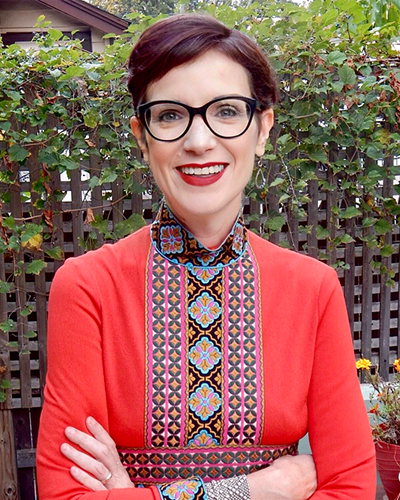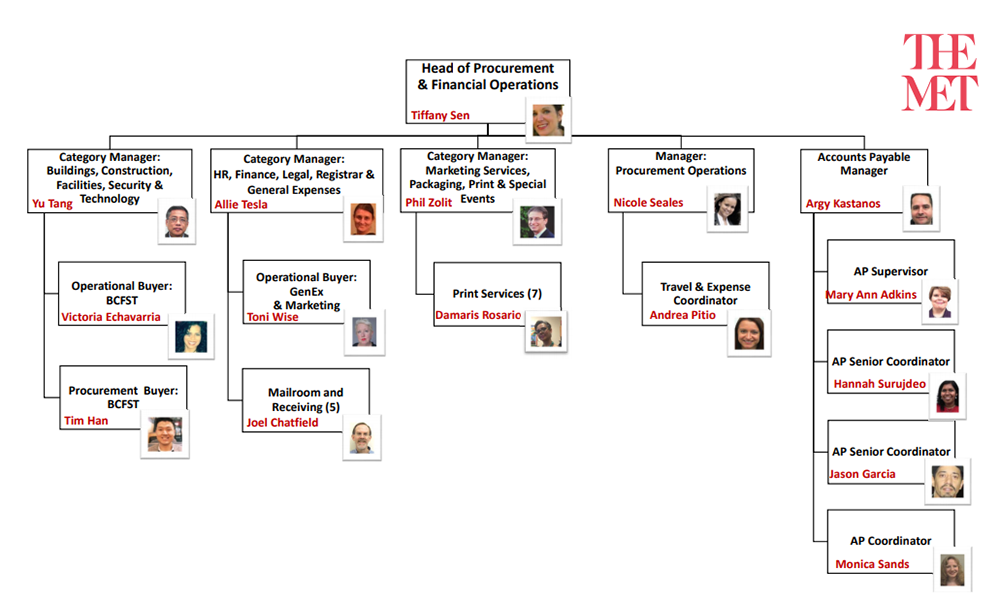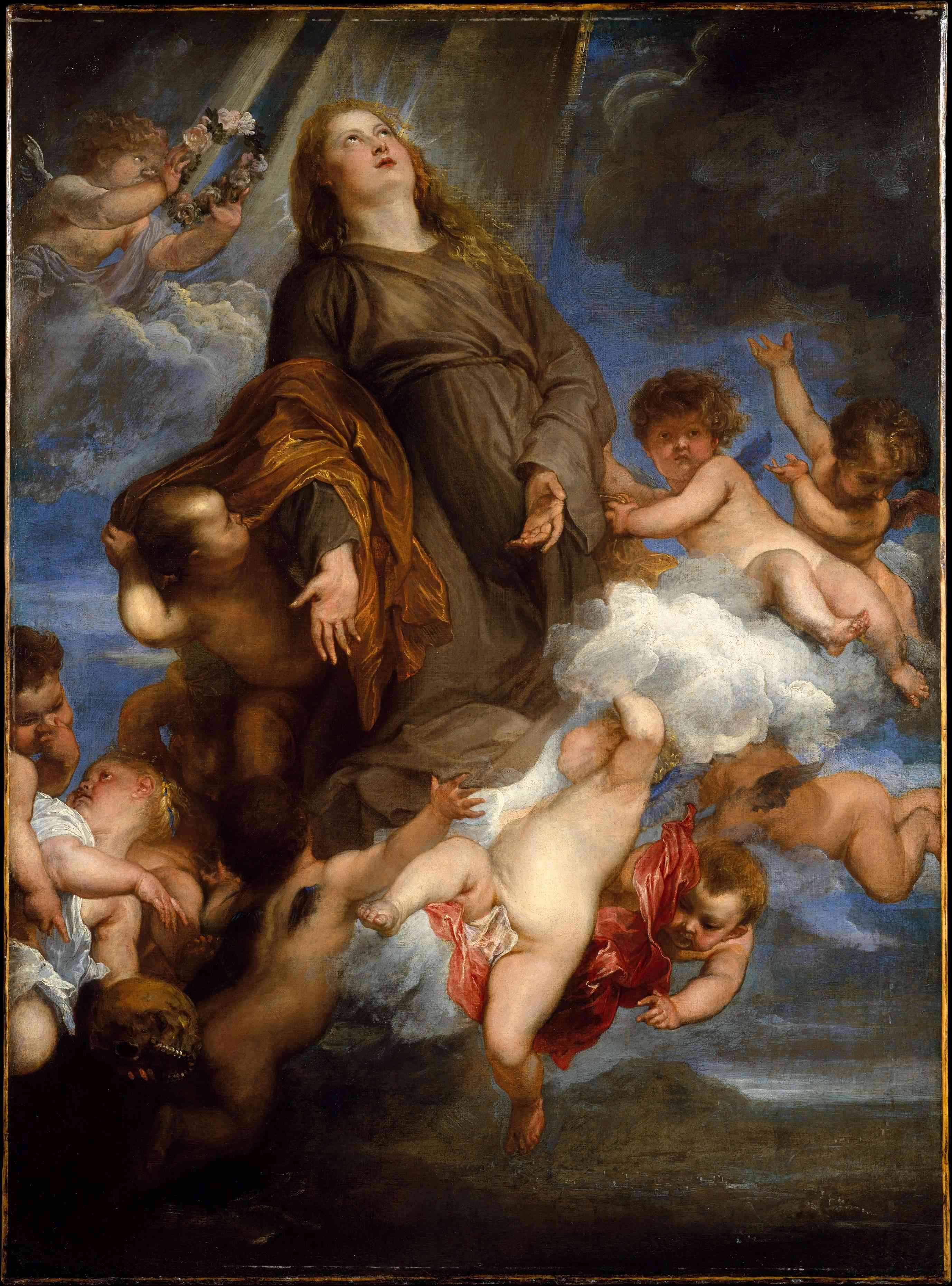
Interview: NY Met Museum CPO on Procurement as an Art Form


(Pic Courtesy: Tiffany Sen)
Museums act as conduits between the past and the present. The galleries containing various artifacts from bygone eras and splendid artwork from past masters have the power to create and leave a magical impression on visitors.
When it comes to museums, the primary role that comes to mind is that of a Curator and not a CPO. As one walks past the artwork on display, they would not readily associate the procurement function with museums.
However, the Metropolitan Museum of Art of New York City -- known as “The Met” -- has a professional procurement team like any other corporate entity.
The Met is the largest art museum in the U.S. and the fourth-largest in the world. It employs nearly 1,600 people, has 17 curatorial departments, and covers 2.2 million square feet of space. Further, it boasts of more than 2 million works in its permanent collections and receives over 7 million visitors per year.
It was noontime in New York when The Met’s Chief Procurement Officer (CPO), Tiffany Sen, received Beroe’s call.
Tiffany laughed by way of answering when asked how she reacts when people express surprise that she works as the CPO at The Met.
“I am not too surprised that people have that kind of reaction. It’s been about three and a half years since I joined The Met, and I have been on the lookout for procurement functions in other museums. There aren’t very many,” Tiffany said.
She added that museums in general are late to the game of realizing the power of a strong procurement team. However, the activities at The Met or any other large museum require a professional purchasing department to ensure an efficient operating model, financial stewardship, risk containment, supplier management, and sustainability.
“There are many goods and services that we need to keep our operations running on a smooth and regular basis. Our buyers are engaged in sourcing projects from architecture, advertising, and art storage to retail packaging, security, and technology, and everything in between.
In fact, you might be surprised to hear that one of our biggest areas of spend is actually construction because we are building and demolishing special exhibition galleries on a regular basis. Walls are going up, artwork and artefacts are showcased, and when the exhibition closes, walls come down, and spaces are reinvented for the next exhibition,” Tiffany said.
The Met is currently replacing the skylights over the European painting section -- a multi-million dollar and multi-year job. However, this is not easy as the European collection encompasses more than 2,500 works of art from the thirteenth through the early twentieth centuries. It features works of Edouard Manet, Claude Monet, Paul Cezanne, Vincent van Gogh, Caravaggio, Rembrandt, and Johannes Vermeer, among others.
“As a professional procurement function, we ensure that we minimize risk and obtain the best market value by working with reputable, qualified suppliers on tight, detailed contracts,” she said.
Art, Music, and Procurement
For Tiffany, working at The Met is a perfect culmination of passion meeting profession. She has a degree in music and is an accomplished classical flutist with blues and jazz inclinations. Her husband is a musician as well -- a composer, arranger, and professional guitarist who has performed worldwide with artists as varied as Joe Bonamassa and Chubby Checker. Together, they are the founding members of Inner Gypsy, a world-influenced blues rock band that is currently working on its third album, Pop Art.

(Inner Gypsy band; Photo Credit: Tiffany Sen)
Moreover, as her mother happened to be a painter and an antique dealer, Tiffany visited several galleries and antique shops in her childhood and hung out with artists. This instilled in her a lifelong love for art and museums.
“Art offers unique perspectives. In the middle of New York City, I have always seen The Met as a place of inspiration, refuge, and hope for people, especially when times get tough, like now during the pandemic. I remember going to The Met after 9/11 and sitting in the galleries by myself for peace and reflection,” Tiffany pondered.
She said working for The Met is a wonderful experience, and one of the best aspects is the chance to talk to the curators of art and the resultant exchange of ideas. She conceded that she does find herself in an “enviable situation” as few get a chance to walk past famous paintings on their way to attend a category meeting.
Procurement as an Art Form
Procurement professionals are known to be tough negotiators. Occasionally, suppliers feel outsmarted by savvy purchasing managers and hence are always on guard in their dealings.
Given her calm demeanor and soft-spoken manner, Tiffany admitted that people who know her personally are often surprised that she works in procurement.
“They look at me funnily and think that being kind, thoughtful, creative and being in procurement are mutually exclusive. However, I completely disagree with the fundamental theory that procurement is a binary exercise in beating up suppliers and slashing costs. You’re much more clever and shrewd when you choose the approach that is relevant to the situation than by always positioning yourself as intimidating and pounding your fist on the table. It’s about persuasion.
Procurement is an art form. It’s subtle and nuanced; it’s strategic and smart. It’s about people and psychology and finding the sweet spot to make a great deal.
Like artists, we plan carefully and use the right tool and technique for the work. Like musicians, we listen well, work together, and respond by moving the conversation forward.
Back in the nineties, when I started my career, the prevailing belief was in a zero-sum game -- you win, and the supplier loses. But a lot has changed since then, and I subscribe to the idea that good procurement is fundamentally about long-term mutual sustainability,” she said.
Her career in purchasing began when she joined the fledgling procurement team at a major women’s retailer. She learned hands-on about all aspects of procurement and was mentored by seasoned professionals. Overall, she spent nearly two decades at luxury retailers such as Ann Taylor and LMVH Group.
Working for a non-profit organization like The Met is different from working for a corporate entity. Financial accounting is quite complex when tracking funding. Moreover, colleagues at The Met are respectful toward one another and are open to listening to new ideas, according to her.
“When I joined the Met in 2017, it was immediately quite apparent that the procurement function needed a pretty large overhaul and transformation. Some of the department stakeholders had the usual fear that procurement would come in and immediately slash spending, putting their projects at risk.
In order to dispel those notions, I did a ‘listening tour’ to understand people’s perspectives about procurement. Initially they didn’t fully appreciate the role of procurement, so I had to convince them to trust me -- to go on a journey with me. Once we started showing project successes, it became easier to gain momentum. Gradually, we built a strong reputation through respectful relationships with our colleagues,” Tiffany said. “We completed over 160 projects last year.”
The transformation was required because procurement had not played a strategic role when she took over. “Goods and services often weren’t negotiated upfront, POs were written to pay invoices, and there were no proper contracts to be found. Procurement did not play the role of a business partner but acted more like an administrative function. We were not a powerful tool to manage suppliers, manage spend, and manage risk,” she elaborated, adding “But we are now; we have the best team imaginable.”
Revised automated workflow approvals were put in place. Further, Tiffany’s team nominated two people from each department as “Procurement Ambassadors” who would be the “transacting users” in the new ERP system.
“Prior to the implementation of the new ERP system, there were over 500 people submitting requisitions and invoices. We reduced that to just over 100 and conducted extensive training for all of them. These people are the ‘power users’ who work on behalf of their respective departments. In effect, they are now seen as an extension of the procurement department,” Tiffany explained.
The transformation eventually led to annual savings of over $7 million, a 28 percent ROI, and a nomination for an Innovation Award by Procurement Leaders, which validated the trust the museum management had placed on the procurement function.
Accounts Payable Synergy
Procurement and Accounts Payable are basically joined together in a single procure-to-pay process. However, in many organizations, they work in different departments, leading to friction.
Unlike in many organizations, the Accounts Payable (AP) team also reports to Tiffany. The question then is, why does it make a lot of sense?
“This happened rather organically. Before I joined, AP had reported into the finance controller. But, as we started to transform Procurement, we found that all of the changes we were making in the procure-to-pay process were still getting stymied at the backend. And it led to lot of ‘finger pointing’ between Procurement and AP,” Tiffany said.
She explained that the most interesting and important aspect of AP for her is that procurement is only touching operational expenditure and does not entail art acquisition. However, AP is involved in everything that takes place throughout the museum.
“Every bill that gets paid goes through the Accounts Payable, so the AP team has deeper reach throughout the museum, as compared to Procurement. And there’s an advantage, I think, to marrying up those two functions,” she said. Additionally, a strong AP team helps her manage cash forecasting, invoice aging, and match exceptions.
To remove conflicts, Tiffany ensured the procurement and AP teams personally get acquainted with each other and respect their differing objectives and perspectives. Once both functions started working together, conflicts reduced, ensuring a smooth process. This effected a lot of synergies and reduced waste.
More importantly, Tiffany said one of the positive side effects of Procurement-AP collaboration is a relatively clean Supplier Master database.
“We have embarked on a Supplier Diversity program. And because AP owns the supplier master data file, they are working closely with the buyers to make sure that as we identify diverse suppliers, all those details are captured in our system. Now, everyone on the team, be it Procurement or AP, has a clear view on the full P2P process,” she said.
The Met - Procurement & Financial Operations

(Source: NY Met Museum)
The Pandemic
New York was hit hard by the COVID-19 pandemic throughout spring and summer. Thousands of people were infected, and sadly, many lost their lives. The Met was closed to the public for over five months as part of strict lockdown measures instituted by the local government.
In what could be construed as a melancholic coincidence, the museum has on display artwork that deals with the theme “plague” -- notably Flemish artist Anthony van Dyck’s 17th-century painting titled “Saint Rosalie Interceding for the Plague-stricken of Palermo.”
It is one of The Met’s first acquisitions, bought after the museum’s founding in 1870. It is currently on display in the “Making The Met: 1870–2020,” a special exhibition to commemorate the museum’s 150th anniversary this year.

(Source: NY Met Museum)
Tiffany said she initially thought the lockdown may just last for a few weeks.
“I don’t think I understood the long-term impact of what this pandemic would mean for the city, institution, and for each of us as individuals. But, we remained closed at the direction of the governor as the city went through a terrible time in the months of March, April, and May,” she added.
The Met eventually reopened in late August with strict capacity limitations of about 25 percent of its former capacity. Her team deftly shifted focus to buy PPE equipment, cleaning services, signage, and screening both for the staff as well as the visitors to the museum.
The procurement department worked with the reopening team to support the guidelines issued in alignment with the government.
“As a result of the closure, we didn’t have visitors coming in. We were not hosting events. There were no educational groups. Our revenue drastically decreased almost overnight. And given this scenario, for the first four-to-six weeks, we were actually canceling contracts and renegotiating and revising many of the contracts that we had put in place.
We canceled our spring Costume Institute gala this year -- a huge event typically held on the first Monday of May every year. We also canceled our 150th anniversary celebrations. We naturally focused many of our resources on expenditure management and demand management,” she said.
After a moment’s pause, Tiffany clarified that she does not believe procurement should play the role of sheriff and manage other people’s expenditures.
“In this instance, we are a partner to the budget team because we can see the potential spend coming down the pipeline. We are provocative and engage our colleagues in ‘what if’ conversations. From April through June (the fiscal year-end), we were able to defer and cancel over $12 million in spend that we would have otherwise incurred”.
Conclusion
Finally, our conversation veered toward the prevalence of procurement functions in museums worldwide. Tiffany noted that there is a professional procurement team at The Getty museum in Los Angeles.
“I know that there are also some procurement staff at the Museum of Fine Arts in Boston, The British Museum, and the Tate in London. I think it could be super interesting to connect with other museum procurement teams.
When I first began at The Met, I searched for Museum CPOs on LinkedIn, as well as through my industry contacts. One of my dreams is to put together an assemblage of procurement professionals who are working in museums, who could talk to each other and share ideas.
This is a call out to all the procurement people working in museums across the globe: Do get in touch with me! It seems right and fitting to me that The Met should start a Museum Procurement Group, and I’d love to champion that type of alliance,” she concluded.
Related Insights:
View All
Get more stories like this
Subscirbe for more news,updates and insights from Beroe







M
K